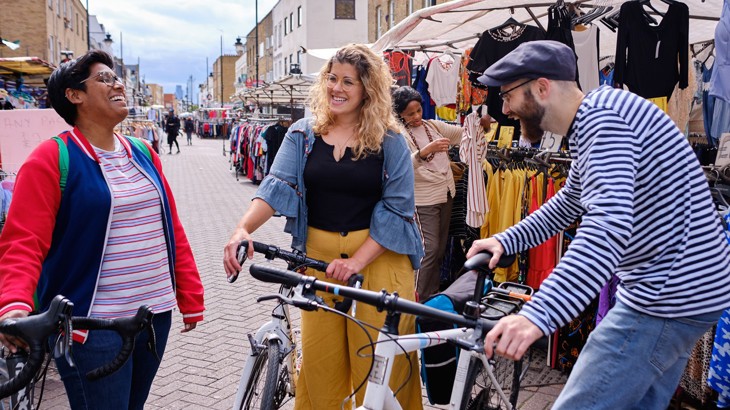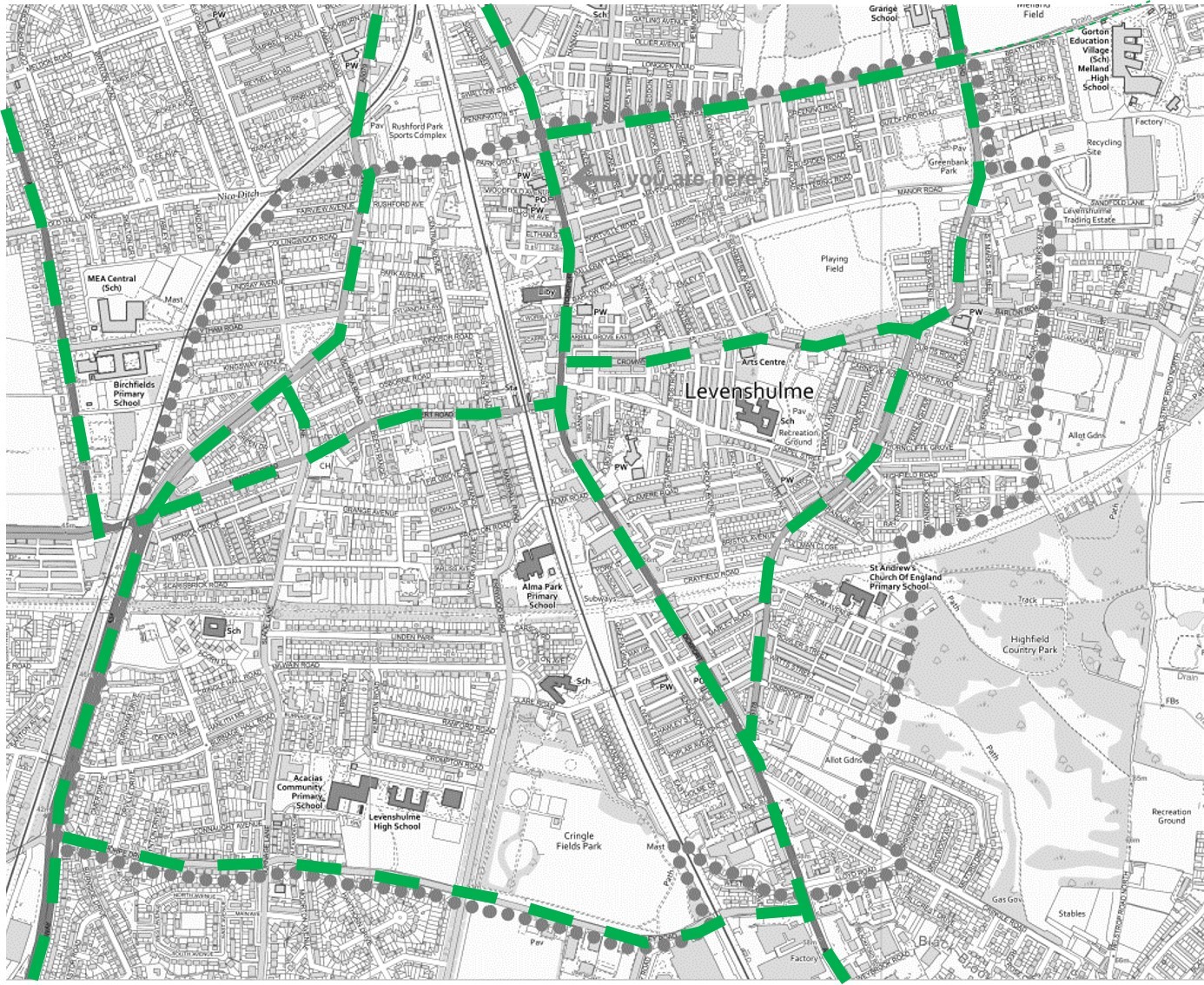This second step builds on the outcomes of the street classification exercise to define the boundaries and size of low traffic neighbourhoods.

Getting the low-traffic neighbourhood (LTN) size right is the most important step of the exercise, as it determines how many streets will become safe for active travel, as well as the time tax added to private car journeys, affecting the potential mode shift.
If it is too small, driving will remain convenient and active travel dangerous, making it unlikely for many of the short car trips to be switched to walking and cycling, minimising the potential for traffic evaporation.
If it is too big, it may be too challenging to deliver.
The boundaries of the LTN will be the roads which remain open to through traffic.
They should therefore be roads which are suited to take heavier traffic volumes.
Building on the outcomes of the street classification exercise, the red routes will almost inevitably fall in this category.
For the blue routes, however, further discussions with local stakeholders will be required to decide whether they should be boundary roads (open to through traffic) or become access-only for private motor vehicles.
The three categories used in the street classification exercise will, therefore, have to be reduced to two:
- through routes (green)
- access-only (residential).
With blue routes re-classified as one or the other.
Key considerations should include:
- Local residents’ definition of community and neighbourhood
- The place function of streets (for example, a local high street – more information in section 6 of this guide)
- The location of schools, green spaces, local amenities and shopping destinations. Areas with more local destinations are likely to be the most successful LTNs, as there will be more walkable journeys
- The proximity to nearby parallel red routes which serve a similar movement function
- The quality of the alternative transport infrastructure (public transport, walking and cycling). The greater the quality of the alternatives, the more inconvenient private car use can be.
Blue routes that are sometimes too politically challenging to filter can initially be left open to through traffic for a period of time (i.e re-classified as red), creating two smaller LTNs.
If support builds over time, the open route can be revisited and filtered to form a larger LTN.
The size of the LTN will depend on the local context, but an indicative size in the region of 1-1.5km2 has proven to be effective.
In the example below, most of the blue streets identified in the workshop have been re-classified as through routes (boundary roads).
Two have not, given their proximity to parallel strategic roads.

Figure 3a: Low-traffic neighbourhood (LTN) definition.
It is important to note that the definition of one LTN should not compromise the potential for future, adjacent LTNs.
In light of this, it is strongly recommended to undertake this exercise at a local authority-wide level, taking a holistic view of the street network, the availability of through routes and the distribution of key destinations.

